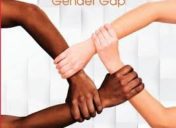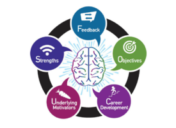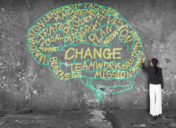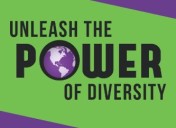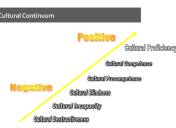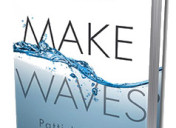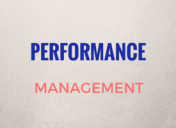New & Social Media: Powerful Tools for HR Leaders
New & Social Media: Powerful Tools for HR Leaders
 On February 14, Pearson Partners hosted the bimonthly DFW HR Roundtable, a networking and knowledge-sharing group of senior human resources executives in the North Texas area. Patti Johnson, founder and CEO of PeopleResults, covered the timely topic of social media for HR leaders. Below is our summary of her presentation.
On February 14, Pearson Partners hosted the bimonthly DFW HR Roundtable, a networking and knowledge-sharing group of senior human resources executives in the North Texas area. Patti Johnson, founder and CEO of PeopleResults, covered the timely topic of social media for HR leaders. Below is our summary of her presentation.
Social media – so what?
I’m sure you are all familiar with the basics of social media, such as Facebook, Twitter and YouTube. But many HR executives don’t see the relevance of social media for their professional careers, or for their internal organizations. I’ve heard people tell me privately, “I wish I had more confidence in my knowledge on this topic.” Other executives tell me, “I don’t see the relevance in HR” or “I’m way too busy to make time for one more thing that is optional.” I’m here today to discuss how you can turn social media into a powerful HR tool.
Generally, I’ve found that HR professionals start as skeptics about social media. Then, as they become more aware of its potential, they start adding new things to their toolboxes. That journey begins with awareness and continues through experimentation. As you learn more and share information with your peers – which is what we are doing today – you will probably start applying social media to your work and your life.
Q. Why does social media matter?
A. First of all, everyone is using social media around the world. It isn’t going away and what you don’t know about social media can hurt you – and your organization. Discussions and conversations can happen anywhere at any time and the traditional cascade communication model doesn’t work anymore – if it ever did. Remember back in the 1990s, when many people said “No one will ever buy music one song at a time.” Don’t be that guy when it comes to social media.
Q. What is social media?
A. Social media involves activities, practices and behaviors among communities of people who gather online to share information, knowledge and opinions using Web-based applications that make it possible to create and transmit content in the form of words, pictures, audio and video. It’s a dynamic, ever-growing field that stretches well beyond our favorites like YouTube, Facebook, LinkedIn and Twitter. At the end of this article, I’ve listed 30 tools that you can start using today.
Q. How many people are using social media?
A. Today, social media is the #1 activity on the Web. It took radio 38 years, TV 13 years and the iPod 3 years to reach 50 million users. Facebook added 100 million users in less than nine months. About 96 percent of GenY’ers have joined a social network, and demographically these Millennials outnumber the Baby Boomers. They consider email passé and slow as they want more instant connections. They use YouTube in searches and read over 13 million articles on Wikipedia. In fact, 25% of search results for the world’s top 20 largest brands are links to user-generated content (Source: www.socialnomics.com)
Q. So how do you harness the power of social media from an HR standpoint?
A. It’s a four-step process that begins with learning about social media. You can join different sites, participate in discussions and follow the thought leaders. Set up an RSS feed or go to del.icio.us to learn more about what’s out there. You need to understand and internalize how it works first.
The second step is connecting with others. For starters, you might try teaming virtually within your organization using Facebook, LinkedIn, Google+ or Skype. Follow people or publications you find interesting on Twitter.
Third, begin to engage in ways that make sense for your organization. You may want to influence others, build your company’s brand, communicate the benefits of your workplace or establish your CEO as a thought leader. Take a look at the options on sites like Twitter, Bing, YouTube and Yelp. The key is to engage with people that you find interesting. Armed with this knowledge and experience, you can then unleash your creativity and apply social media to achieve measurable results.
Q. Can you give us some examples?
A. Certainly. Best Buy created a wiki as an online suggestion box. This was a low-cost, problem-solving solution that increased the company’s engagement with customers. Accenture created Careers Marketplace to highlight and clarify career opportunities, improving retention and creating goodwill. PepsiCo R&D created a virtual science fair by using an internal video submission contest to create uptake, engagement and retention.
Q. Can you tell us about your own journey?
A. For me, I had been on Facebook and LinkedIn for some time, but then I started experimenting with Twitter, continuing with Facebook for business interests and expanding my use of LinkedIn. My biggest ‘aha!’ moment came when I began following people and publications in my field and realized how much information I was getting through Twitter. I began to feel more current than at any time before in my career.
From there, I moved on to learning and sharing information with others, through blogging, joining discussion groups and connecting with a broader network. Since becoming an active social media user, I’ve been able to build new offerings for my clients, create new solutions, generate new ideas and experiment with new ways to work with my team. This experience has changed how I think about how new programs are introduced, opportunities for communicating and develop new strategies for engagement – all very relevant in the HR space.
Q. What do you think our next steps should be?
A. First, is you need to personally become active and understand the possibilities. Then, look at how your HR organization is currently approaching social media. Where are the opportunities to improve communications and productivity? Second, look for the “big win” – try to determine the greatest opportunities for you to benefit from social media in your career and your organization. Don’t be afraid to experiment to see what happens. Measure your results, refine your approach and repeat the experiment. Social media is a powerful tool – don’t be afraid to use it!
Q: What are some examples of the major social media sites?
A: Here are 30 of my favorite social media sites:
30 Social Media Sites to Know
| Reference | Socialnomics.com, thesocialmediabible.com |
| Social Networking | Facebook, LinkedIn, Google+, Twitter |
| Publishing | Blogger, WordPress, Wikipedia |
| Microblogging | Tumblr, Plurk |
| Search | Google, Technorati, StumbleUpon |
| Livecasting | TalkShoe |
| Virtual Worlds | Second Life |
| Productivity | Constant Contact, Survey Monkey |
| Aggregators | Reddit, Yelp, Digg |
| RSS | FeedBurner |
| Video | Hulu, YouTube, Vimeo |
| Bookmarking | Del.icio.us |
| Photosharing | Flikr, Photobucket, Picasa, Shutterfly |
Patti Johnson is the CEO & Founder of PeopleResults, a consulting group that helps organizations ‘start the wave’ through smart use of change, communications, talent development and organizational effectiveness. PeopleResults partners with clients such as PepsiCo, McKesson, Frito-Lay, Bell, Best Buy and many others to translate their business objectives into their people agenda & plans. Patti was previously the CPO for Accenture- HR Services and held numerous global roles, such as Global Leader for People Strategy & Career Development. She is an instructor at SMU in their executive education program and is a frequent speaker on leading organizational change.
Please save the date for our next event on Tuesday, April 10, 2012. Elizabeth Naylor, founder of Ebenezer Wellness, will discuss employee and personal wellness.
View this and other past Roundtable presentations online now.
If you are a current or in-transition senior human resources executive and would like to become a member of the DFW HR Roundtable, please join our LinkedIn group, or email .
Related Posts
- ← Navigating Global Turmoil: A CFO Perspective
- Tips from the Leadership Coach: Ask for the Job – And Keep Asking! →

